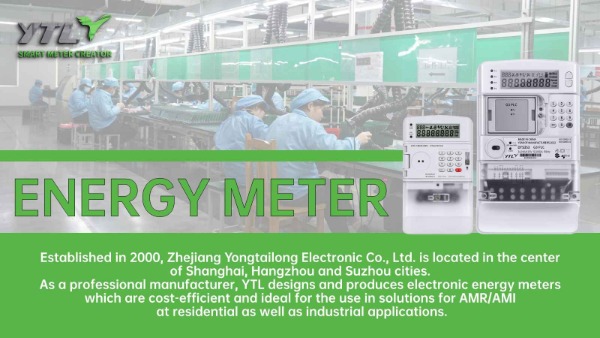The load control function of an electricity meter plays a crucial role in modern power system management. By properly utilizing this function, not only can the efficiency of the power system be improved, but also the supply quality and safety can be ensured. The following is an in-depth discussion on how to effectively apply the load control function of an electricity meter.
1. Understand the basic principles clearly
 The load control function of an electricity meter mainly relies on real-time monitoring and control of electrical loads.
The load control function of an electricity meter mainly relies on real-time monitoring and control of electrical loads.
It achieves accurate prediction and control of power load by conducting load analysis on various devices connected to the grid. When the grid load exceeds a set threshold, the load control function can automatically or manually adjust the operating status of devices to reduce the load, thereby ensuring the stable operation of the grid.
2. Set the load threshold reasonably
Reasonably setting the load threshold is the key to effectively applying the load control function of the electricity meter. The setting of the threshold should consider factors such as the actual operation of the grid, the rated power of the equipment, and the needs of users.
Setting the threshold too high may lead to grid overload, causing safety accidents; while setting the threshold too low may limit the normal operation of equipment and affect users' electricity consumption experience. Therefore, threshold values should be dynamically adjusted according to actual conditions to ensure the safe and stable operation of the grid.
3. Schedule equipment strategies optimal
 Optimizing equipment scheduling strategies is an important means of effectively applying the load control function of smart electricity meters. By monitoring and analyzing the operational status of various types of equipment in the grid in real-time, more reasonable equipment scheduling strategies can be developed.
Optimizing equipment scheduling strategies is an important means of effectively applying the load control function of smart electricity meters. By monitoring and analyzing the operational status of various types of equipment in the grid in real-time, more reasonable equipment scheduling strategies can be developed.
For example, during peak hours, the load can be reduced by adjusting the operating status of some equipment or activating backup equipment; during off-peak hours, the operating mode of equipment can be optimized to improve efficiency. Such scheduling strategies can not only ensure the stable operation of the grid, but also effectively reduce operational costs.
4. user engagement Increasing
Increasing user engagement is an important way to make good use of the load control function of smart electricity meters. By providing users with real-time electricity consumption information and advice, users can be guided to use electricity resources more rationally.For example, users are encouraged to reduce the use of high-power devices during peak hours; while during off-peak hours, they can appropriately increase electricity consumption. In addition, energy-saving awareness of users can be further enhanced through energy-saving promotional activities and the provision of energy-saving equipment.
5. Strengthen technical support and training
 Strengthening technical support and training is an important guarantee to ensure the effective application of the load control function of electricity meters. Regular technical training and operational guidance should be provided to relevant personnel to improve their ability and level of applying the load control function.Furthermore, it is necessary to strengthen cooperation and communication with equipment manufacturers and technology providers, introduce advanced technologies and equipment in a timely manner, and enhance the intelligence level of the power grid.
Strengthening technical support and training is an important guarantee to ensure the effective application of the load control function of electricity meters. Regular technical training and operational guidance should be provided to relevant personnel to improve their ability and level of applying the load control function.Furthermore, it is necessary to strengthen cooperation and communication with equipment manufacturers and technology providers, introduce advanced technologies and equipment in a timely manner, and enhance the intelligence level of the power grid.
6. Consideration of practical application scenarios and limitations
When using the load control function of the electricity meter, it is also necessary to fully consider practical application scenarios and limitations. For example, in rural or remote areas, the application of load control functions may be limited due to the relatively weak structure of the power grid. In addition, there are differences in electricity consumption demands among different industries and users, so it is necessary to formulate targeted load control strategies based on actual circumstances.
With the rapid development of smart grids and the large-scale integration of new energy sources, the load control function of electricity meters will face more challenges and opportunities. In the future, further research and innovation in load control technology should be strengthened to improve its application capabilities and effectiveness in complex grid environments. At the same time, attention should be paid to changes in user demands and behaviors, as well as the impact of new energy sources on grid load characteristics, in order to continuously improve and optimize load control strategies. Effective utilization of the load control function of electricity meters requires multiple aspects to be considered in order to fully utilize the role and value of electricity meter load control functions in power system management, making contributions to the construction of a safe, stable, and efficient modern power system.

 English
English 中文简体
中文简体

.jpg?imageView2/2/w/500/h/500/format/png/q/100)
.jpg?imageView2/2/w/500/h/500/format/png/q/100)




-1.jpg?imageView2/2/w/500/h/500/format/png/q/100)






